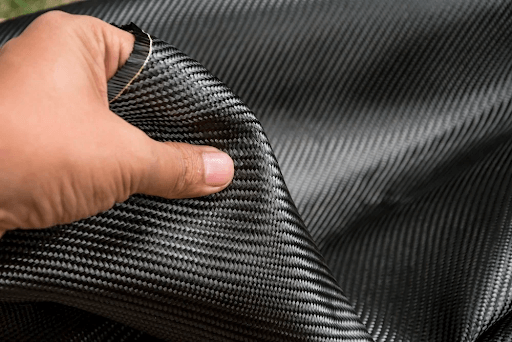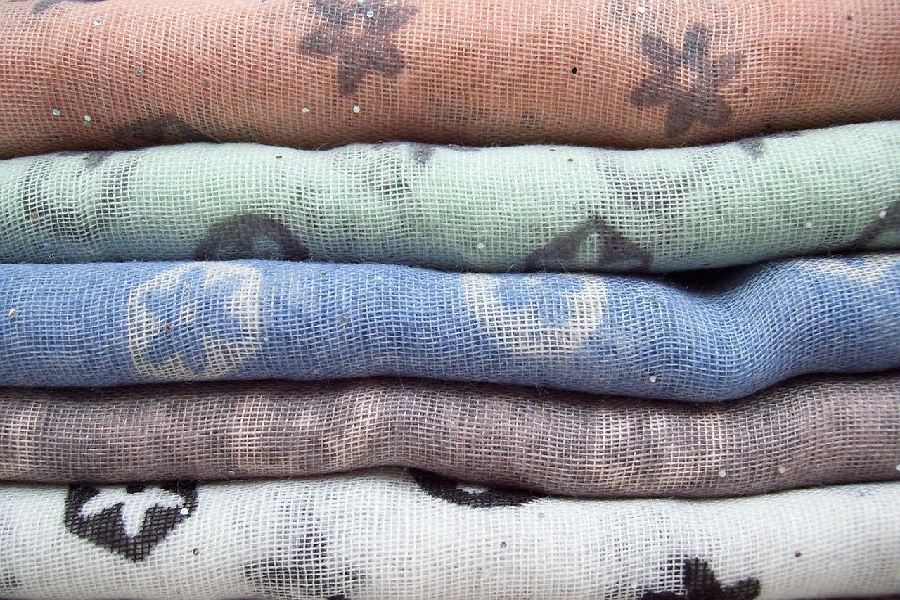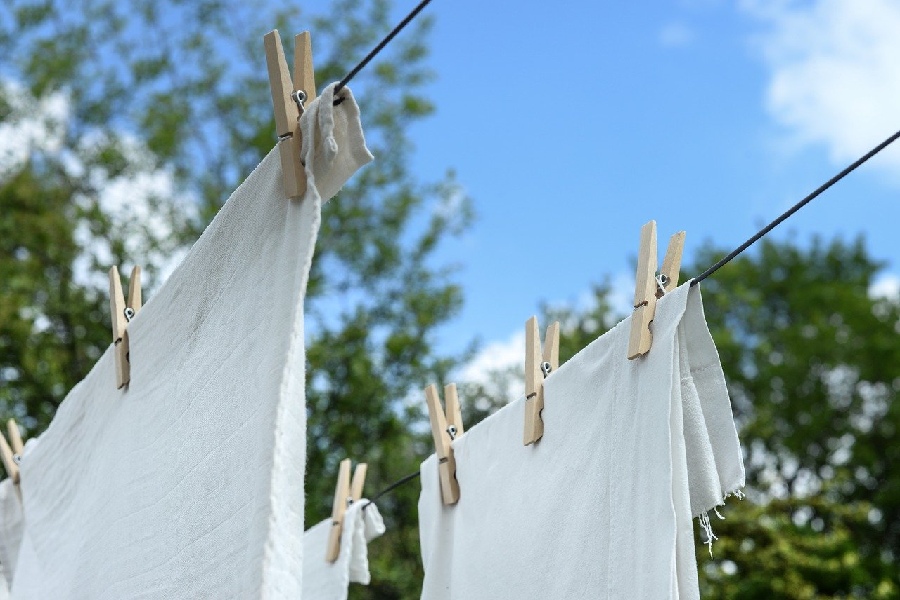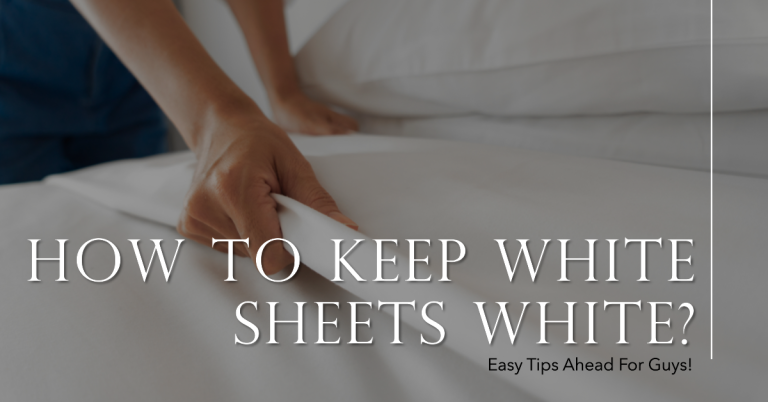The debate of choosing the better one from polyamide vs polyester remains controversial. So, how to distinguish between polyamide vs polyester ? Polyamide fabric is a low-maintenance material with higher flexibility and greater strength. On the other hand, polyester outperforms in terms of water resistance and breathability.
Today, this article will help you distinguish these fabrics by giving a detailed comparison. Let’s join us and choose the winner!
What Are Polyamide vs Polyester Fabrics?
What is Polyester ?
Polyester is among the most common synthetic fabrics created by two British scientists. Its composition includes plastic, water, petroleum, and other components. This fiber is more robust than natural fibers such as linen or cotton. It’s also mildew resistant and has certain elements that enable it to work for a range of textiles.
Manufacturers weave the polyester strands quite tightly. As a result, you can expect increased fabric thickness and strength, as well as its ability to repel dirt and stains. One of the reasons for this material’s popularity is stain resistance. We will also reveal other qualities of the cloth in this article.
Polyester is common for making clothes, mainly t-shirts and athletic wear. It’s a multipurpose fabric that can help people make clothes for warm and cold climates or household stuff, such as bed sheets, curtains, and pillows.

What is Polyamide ?
Polyamide, also called nylon, is also a synthetic fiber. However, it refers to a group of textiles rather than individual fibers. Nylon is its main component.
Polyamide fabrics are older than polyester. They also contain water, petroleum, and other chemicals. However, compared to polyester, the method for combining chemicals in polyamide is quite different.
For example, polyamide is more durable in a unique manner. The weaving method is also different from that of its competitor.
Polyamide is best for making outerwear and sportswear, such as jackets. Moreover, thanks to its stretchability, people also use this material to produce underwear, swimwear, and tights. In terms of household accessories, carpets or rugs made of this fabric are pretty common.

What Are The Differences Between Polyamide vs Polyester?
Is polyamide the same as polyester? The answer is no.
There are several distinctive features between polyamide vs. polyester. We will break them into separate sections to check them easily:
Breathability
Polyester clothing is famous for sportswear manufacturing. Hence, it must have some degree of breathability. However, manufacturers weave the fibers firmly. As a result, the fabric is less breathable than other fibers.
Nevertheless, the microscopic spaces between the threads enable some airflow to circulate. In other words, polyester isn’t the most breathable cloth, but it’s also not the least. Polyamide materials, as a whole, aren’t highly breathable, especially when it comes to nylon.
Even though polyamide textiles are common in athletics, they may not be heat resistant and make you sweat. Often, people combine this cloth with other fabrics to be more breathable.
Colorfastness
Polyester fabric is often colorfast due to the blend of compounds used in its production and the weaving of the fibers’ ability to maintain the color. However, even though this material is colorfast, darker colors may still bleed or fade a little more than lighter hues.
Polyamide, particularly nylon-based polyamide fabrics, is less colorfast. In this situation, the weave and chemical combination produces the inverse result. The cloth will absorb the color instead of holding it. The hue even fades faster in the sunlight.
Durability
Both polyamide and polyester fabrics are extremely tough but in their own way. Polyester fabric is anti-shrinking and wrinkle-resistant. It also has exceptional stain resistance. Polyester is an excellent choice for clothes that will be subject to a lot of wear and tear because of these characteristics.
In terms of durability, polyamide fabric shares many of the same characteristics as polyester. However, you can expect a high degree of durability since it can be highly abrasion-resistant.
Polyamide is oleophobic. Hence, it can repel oil stains like perspiration. Moreover, it is not oil-resistant and may cling to smells.

Moisture-wicking
Both of these synthetic fabrics are excellent at draining moisture away. This feature makes them so popular in sportswear making. However, since the polyester fabric is hydrophobic, it is better to avoid absorbing water.
This cloth has a natural inclination to repel moisture, even if it isn’t completely water-resistant. Moreover, because polyester breathes better, it can evaporate faster.
On the other hand, polyamide fabrics can also wick moisture away. However, they hold onto moisture longer since nylon fibers are not as breathable.
Softness
Polyester misses the mark in several ways, including softness. This synthetic fabric is lightweight. However, many people complain about its stiffness and discomfort.
Polyamide fabric is softer, which is one of its advantages. It contains a synthetic substitute for silk, making you feel soft with every touch. Moreover, polyamide fibers are more flexible. It is a charming fabric because it combines flexibility and softness.
Stretchiness
Polyester fabrics have a moderate stretch characteristic due to the fibers’ tight weave and thickness.
Although this material helps make clothing, it sometimes comes with stretchy fibers like spandex for better stretchiness. Tight-fitting clothes like leggings or yoga trousers often come from these clothes.
Polyamide is more elastic because of its flexibility. You can come across many yoga pants, athletic shorts, and leggings made of nylon and other polyamides. Clothing for this function must be able to stretch significantly. It’s also a superior fabric for different forms of form-fitting garments.
Warmth
Polyester is highly durable. It can help you stay warm and retain your body heat in the cold. Moreover, its breathability implies that it doesn’t make you sweat.
Polyester is typically the base layer for garments since it has good insulating properties. On the other hand, people often use both nylon and other polyamides in outerwear and jackets. However, they work best as the outermost layer since they resist moisture and water.
Nevertheless, if the cloth becomes wet, it won’t insulate you and will need longer to dry, making you colder.

What Are The Similarities Between Polyamide vs Polyester ?
Ease of care
Due to their durability as well as shrink, wrinkle, and stain resistance, both of these fabrics are incredibly easy to handle. You may even maintain them in the same manner.
It would be best to wash them in a normal cycle in the washing machine using cool or warm water. Then, you should let them air dry or use a dryer with medium and low heat when drying them.
Remember to avoid high heat, UV rays, and hot water. Also, don’t iron them at a high temperature. They may end up burning and melting because they are both synthetic and composed of plastic. High heat will degrade the cloth.
If the fibers do discolor, do not use chlorine bleach. Instead, go for non-chlorine bleach to avoid damaging the cloth. Aside from the bleach, there aren’t any specific care requirements.

Cost
Aside from the bleach, there aren’t any specific care requirements to take. Synthetic materials are often less expensive to create than natural materials since the fibers do not need to be collected and treated in the same manner.
They are also inexpensive to purchase because of their low-cost components. On the other hand, polyamide fabric is more expensive than polyester because it is more flexible and softer.
The differences between polyamide vs. polyester are clear now. Let’s sum up with this table:
| Polyester | Polyamide | |
|---|---|---|
| Breathability | Quite good | Moderate |
| Colorfastness | Good | Moderate |
| Durability | Good | Good |
| Moisture-wicking | Yes | Yes |
| Softness | Sometimes stiff | Very soft |
| Stretchiness | Not stretchy | Stretchy |
| Warmth | Warm, best used as a base layer | Warm, best used as an outer layer |
| Ease of care | Easy | Easy |
| Cost | Affordable | Affordable |
What Are The Pros vs Cons Of Polyamides vs Polyester?
Both polyamides vs. polyester have benefits in cost, moisture-wicking, durability, and ease of care. However, each still has its own advantages and drawbacks. You can choose either nylon or its competitor after weighing both sides.
Polyester
Pros
- Breathable
- Good colorfastness
- Best for making base layers of clothing
Cons
- Not stretchy
- Maybe stiff
Polyamide
Pros
- Very soft and comfortable
- Stretchy
- Best for making outer layers of clothing
Cons
- Not as breathable
- Not good at colorfastness
Conclusion
These materials are synthetic materials that may be used with natural fabrics. They are also non-biodegradable yet infinitely reusable. To put it another way, each has its own specific features that make them shine. It comes down to your preference and requirement to determine the winner.
Hopefully, you will find this article helpful. If you have any questions, please feel free to ask. Thank you for reading!
FAQs
None of them are water-resistant. However, nylon absorbs more moisture. Manufacturers often treat these two fabrics with waterproofing chemicals to make them watertight.
It’s not a good idea. The fabric softener may leave some spots on your clothing, degrading its quality. If you really need to soften the fabric, only use a little chemical. This video will show you how to do it properly.
Nylon and other synthetic polyamide materials may contain harmful chemicals. However, clothing producers take precautions to ensure the safety of clothes made of nylon fibers. Clothing manufactured from this fiber is safe when used correctly and according to the manufacturer’s instructions.


